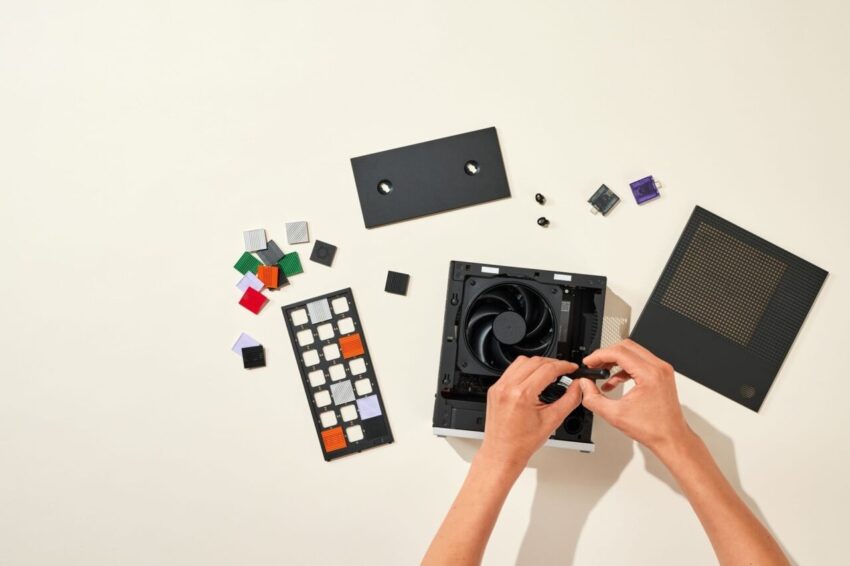**AMD’s Secret Weapon Against Nvidia: The “Max” Chip That Does It All**
AMD is taking a unique approach to compete with Nvidia’s gaming products. Rather than releasing another standalone graphics card, the company is betting on its “Max” chips—versatile processors capable of handling everything, everywhere, all at once.
This year, AMD’s Strix Halo lineup is headlined by the Ryzen AI Max+ 395. However, the series might soon expand with a few younger siblings sporting similar graphics capabilities but at a lower price point. These new chips could offer gamers a more budget-conscious alternative compared to any currently available “affordable” GPU.
### New Strix Halo Chips Leak: Ryzen AI Max+ 388 and 392
Recently, benchmarking software PassMark revealed public data suggesting the existence of low-end Strix Halo chips. VideoCardz was the first to report the supposed leaked specifications for the AMD Ryzen AI Max+ 388 and Ryzen AI Max+ 392.
The “+” in the chip names appears to indicate the inclusion of the full Radeon 8060S integrated GPU—a key element that makes these chips excel at gaming on resolutions between 1080p and 1440p.
Gizmodo tested the Ryzen AI Max chip on the Framework Desktop and described it as a miniature powerhouse, especially given the machine’s small and portable form factor.
According to PassMark specs:
– The **Ryzen AI Max+ 388** is an 8-core CPU with a boosted clock speed of 5GHz.
– The **Ryzen AI Max+ 392** is expected to be a more powerful 12-core variant.
The Radeon 8060S integrated GPU contains 40 compute units, which directly impact its overall gaming performance. To put this in perspective, the Radeon RX 9060 GPU comes with 28 compute units along with 28 ray accelerators and 56 AI accelerators. While a 9060 paired with a discrete gaming-ready CPU can outperform current APUs, it comes at the cost of managing two separate components.
### Low-End GPU Market Slowing Down
This year’s lineup of graphics cards, particularly those accessible to most gamers, highlighted a slowdown in low-end GPU performance improvements. The “60-series” GPUs, including the Nvidia GeForce RTX 5060 and AMD Radeon RX 9060, both feature a modest 8GB of VRAM. This limitation hinders their performance at higher resolutions.
Additionally, both GPUs were overshadowed by their higher-tier siblings—the $430 RTX 5060 Ti and RX 9060 XT variants.
Nvidia attempted to minimize the impact of the minimal upgrades in the RTX 5060 over the previous generation by restricting review units and cautioning some reviewers against extensive testing. This strategy reflects the pressure on a $300 GPU to outperform integrated CPU and GPU solutions like AMD’s APUs.
### Competitors and Future Prospects
Intel offers relatively affordable GPUs as well, such as the standout Arc B580 priced around $250. However, the company has yet to clarify its long-term strategy regarding discrete GPUs. Intel plans to reveal details about the “next Arc family” soon and aims to compete with AMD by leveraging the Panther Lake lineup, particularly 16-core processors with 12 Xe3 graphics cores.
Meanwhile, PassMark benchmarks hint that AMD is working on new gaming CPUs based on its latest Zen 5 microarchitecture. Notably, the Ryzen 7 9700X3D is among the upcoming models generating buzz. Leakers have also mentioned more powerful CPUs like the Ryzen 7 9850X3D and Ryzen 9 9950X3D2 in development.
The Ryzen 7 9800X3D remains the best desktop CPU of this year. It features a 3D V-Cache that grants faster memory access, making it particularly effective for gaming—especially when paired with a high-performance discrete GPU.
—
AMD’s strategy of integrating powerful GPUs directly into versatile processors could reshape the budget gaming landscape, offering an alternative to the slowed progress seen in entry-level graphics cards. Gamers looking for strong performance without the premium price may soon have new options to consider with AMD’s expanding Strix Halo series.
https://gizmodo.com/amd-ai-max-plus-388-and-ryzen-ai-max-plus-392-cpu-specs-leak-2000681922
